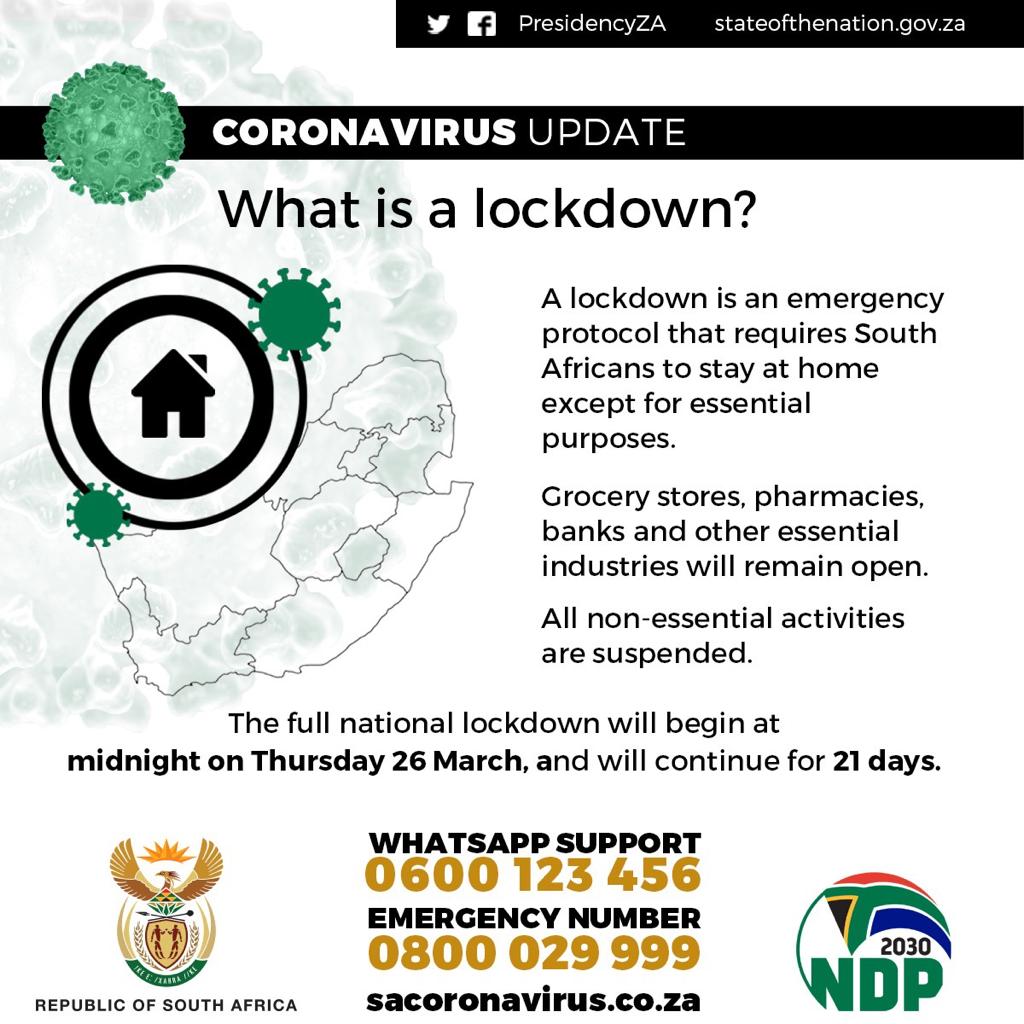


This swift action also received global praise for promoting public health measures in the absence of a vaccine or explicit COVID-19 treatment. Many, as the survey results show, welcomed the development of the SA government’s five-stage countrywide lockdown strategy that aimed to mitigate further viral exposure and containment in an effort to prevent pandemic hotspots and further threats to the already overwhelmed health system to ensure flattening of the curve. They included support for the strategy to delay the peak of COVID-19 to a cavalier attitude to the lockdown restrictions.
SOUTH AFRICA LOCKDOWN FULL
When the full or “hard” lockdown was announced, reactions were mixed. After the initial lockdown, there was a subsequent extension of a further two-week period (until April 30 th). There was also deployment of military forces to assist the police in managing the imposed lockdown to ensure people’s compliance. This lockdown period resulted in the closure of schools, mass gatherings of 100 or more people were prohibited, suspension of visits to correctional facilities, ceasing of business and other entity operations, the prohibition of commuter transport services except for essential services, local and international travel bans, and border closures except for cargo, fuel and goods transportation. Based on the known evidence that the disease had a 14-day incubation period during which symptoms of infection could manifest themselves, the three-week lockdown was a deliberate intervention to break the rate at which transmissions could occur. As part of the efforts to minimize the spread of COVID-19 and promote social distancing, the South African president declared a national state of disaster and announced a three-week “hard” lockdown (later known as level 5) beginning at midnight of 26 th March 2020. South Africa (SA), having the highest number of cases in sub-Saharan Africa, has worked hard to optimize the state of preparedness in response to COVID-19. Within the first three months of COVID-19 infections, a third of the global population faced lockdown.

Lockdowns resulted in the closure of schools, tertiary institutions, businesses, food outlets, religious places of worship, land, sea and air borders, all sporting activities, with only essential service businesses and medical facilities allowed to operate. This led to curfews and lockdowns to contain the spread of the virus. Thus, the application of preventative measures in the quest to control COVID-19 became a crucial intervention. It is in this context that governments around the world, prompted by the WHO, began taking steps that were, and remain, unprecedented in modern times to prevent a total catastrophe. Of further concern is that to date, there has been no explicitly recommended viral treatment or vaccine for COVID-19. As the COVID-19 outbreak swept across the African continent, health authorities and governments began taking swift actions as part of the efforts to slow the pandemic, flatten the curve and prepare the already overburdened health systems for the rise in cases. The concern of an outbreak in the African continent rose, as the already overwhelmed and fragile health systems would not handle an outbreak of this severity and nature. On 30 th January 2020, the World Health Organization (WHO) declared the novel coronavirus outbreak, now known as COVID-19, as a “Public Health Emergency of International Concern (PHEIC).” This initiated greater concern and the need for enhanced preparedness in response to such an epidemic, and a month later, WHO reclassified COVID-19 as a global pandemic. It began in December 2019, when Wuhan City, China, became the site of a respiratory epidemic of unknown causes, which drew significant interest not only inside China but also globally. COVID-19 is a rapidly advancing pandemic, caused by a novel coronavirus (SARS-CoV-2), affecting populations across the globe.


 0 kommentar(er)
0 kommentar(er)
